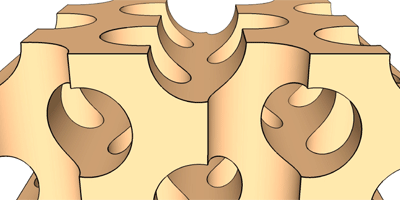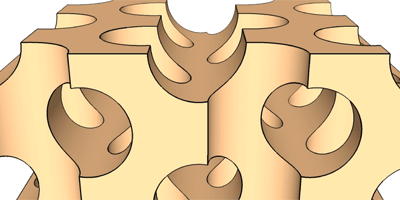No Permission for Emission
Since Eli Yablonovitch and Sajeev John independently postulated that the density of states for light can be controlled in photonic crystals, scientists have been exploring the potential of these materials for engineering slow-light, photon-atom bound states, and other cavity QED effects. In principle, the spontaneous emission of light could be inhibited in photonic crystals, providing a means to control radiative transitions and develop new or enhanced semiconductor LEDs, solid-state lasers, and solar cells.
Inhibiting emission inside a photonic crystal requires a 3D photonic band gap—a range of frequencies where no photonic states are allowed, so excited atoms cannot emit light in any direction. Crystals with a diamondlike lattice are ideal because they have the largest band gaps.
Writing in Physical Review Letters, Merel Leistikow and colleagues at the University of Twente in the Netherlands, describe a silicon structure with a 3D photonic band gap that suppresses spontaneous emission of quantum dots placed within it. They fabricate a photonic crystal shaped like an “inverse” woodpile, which consists of two perpendicularly etched sets of carefully aligned pores in silicon, arranged in a diamondlike lattice. They immerse their crystal in a dilute suspension of lead-sulfide colloidal quantum dots, excite the dots with short laser pulses, and study emission at various frequencies. Leistikow et al. report a tenfold reduction in the decay rates of the quantum dot emissions that have frequencies deep inside the band gap. In agreement with theory, the effect strongly depends on the position of the quantum dots relative to the surface of the crystal. – Manolis Antonoyiannakis





